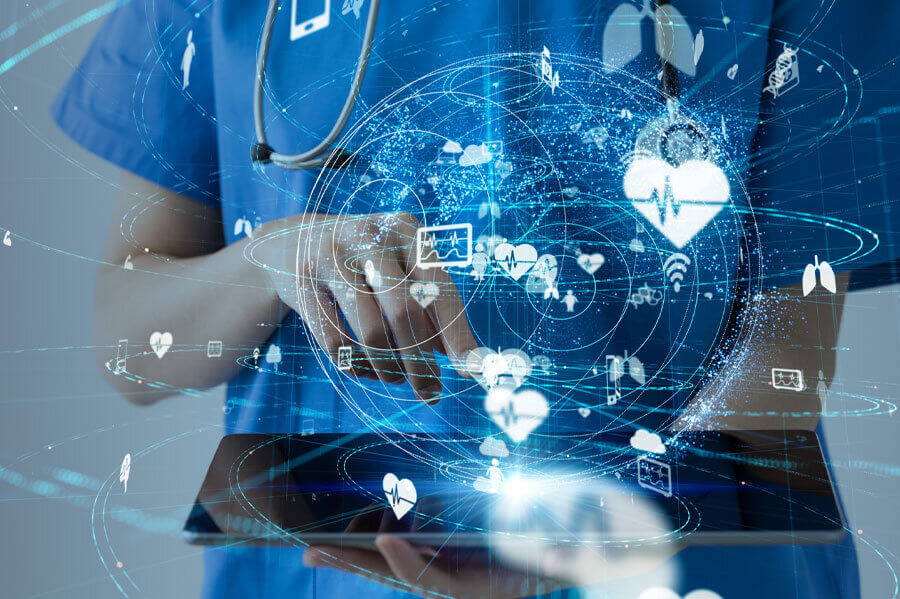Data science applications in healthcare
Diagnostics – machine learning can be used to detect microscopic anomalies in medical images that can’t be seen by radiologists. Similarly, machine learning can process many “non-radiology” images such as pathology slides and dermatology photos. It can also process non-images data as well, such as ECG signals. Identifying patient profiles that are at high risk of readmission. Population health applications like disease prevention. Data can enable early detection or prediction of an outbreak so that health authorities can be prepared, act early, and optimize spending to protect the health of a population. For example, BlueDot used machine learning to identify the emerging coronavirus risk in 2019, accurately predicting most of the first cities to be affected. Mining genomics data to find links between genetics and health so that patient care can be personalized based on their genetics.
Adopting data science applications from other industries:
Business intelligence strategies – that are used in many industries to understand clinical, financial and operational issues, communicate insights, inform decision-making, optimize workflows, and improve processes – are also applicable to healthcare. Examples include: Dashboards can help hospital administrators and IT staff monitor case volumes, inventory, and IT infrastructure. They can also be used to explore the data to gain new insights and improve operational decision making and planning Predictive analytics can be used to model relationships between patient profiles, symptoms, and health outcomes to help care providers identify risk factors for individual patients. Healthcare administrators can use predictive analytics to predict demand so that they can streamline their operations (e.g. via staff scheduling) and save costs. Recommender systems similar to those used by Netflix and Amazon to recommend entertainment and products can also be used to recommend relevant medical literature to care providers based on what is read by their peers as well as their own profile. Text mining, used by search engines like Google, can also be used to search and retrieve relevant information from vast collections of patient data or medical literature. Mobile device technology can be adapted for contact tracing in a disease outbreak such as in the COVID pandemic. The data can be used to limit exposure of a population, predict spread and plan effective responses.
Alongside increased adoption of electronic health records and decreasing storage costs, additional trends are increasing opportunities for the applications described above. Open data projects are making vast amounts of healthcare data available for the creation of more accurate statistical and machine learning models, which are also aided by the increasing availability of computing resources at lower costs. Wearable devices such as FitBits and the Apple Watch can collect crowd-sourced data from millions of people (if they choose to share it). Lastly, the increasing data literacy of people all around the world is enabling healthcare providers and patients to understand dashboards and other analytics outputs. New information that data science is delivering is providing insights to help people make informed healthcare decisions. By adopting data science applications, healthcare organizations can utilize their existing data to improve patient care. They can also overcome many of the remaining hurdles in electronic health record adoption. And, due to the value of the information that data science can extract, data increasingly becomes an asset, which incentivizes healthcare organizations to store more of it electronically.




